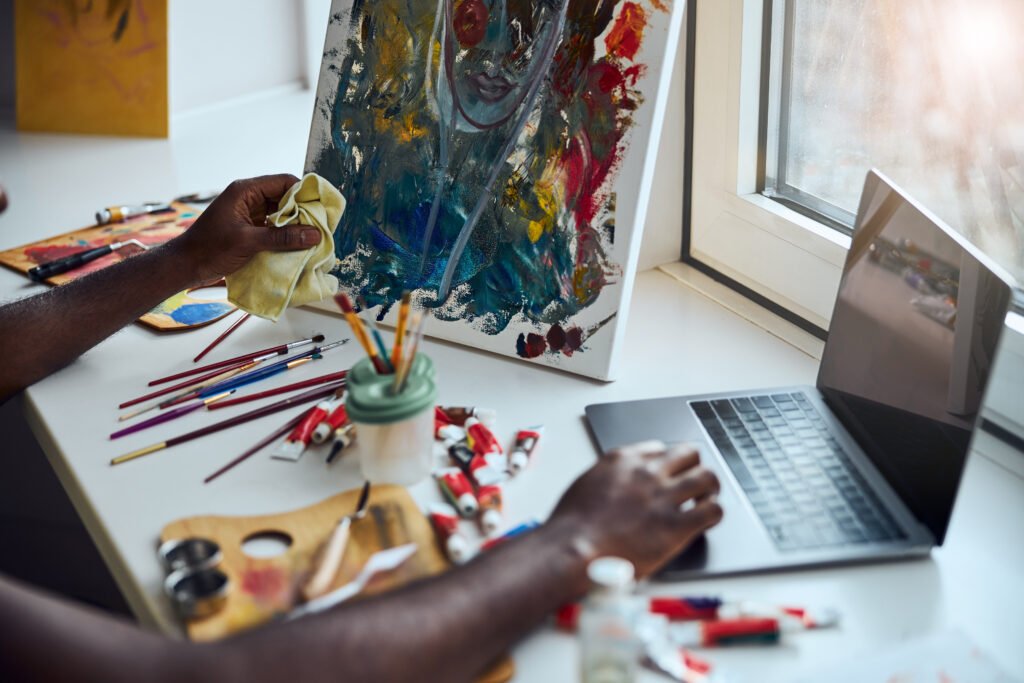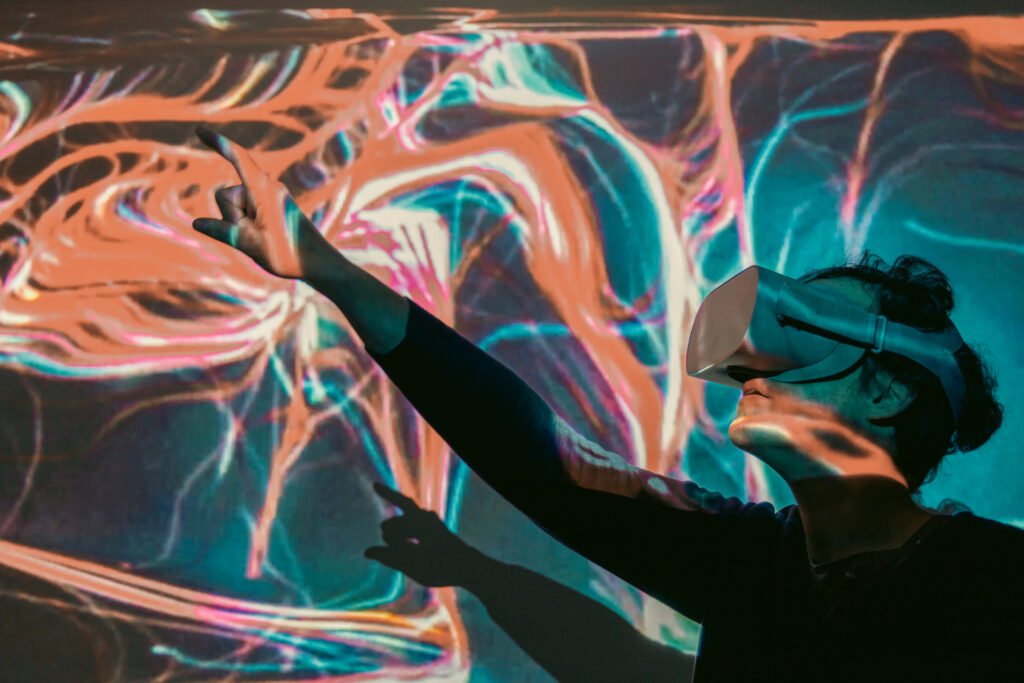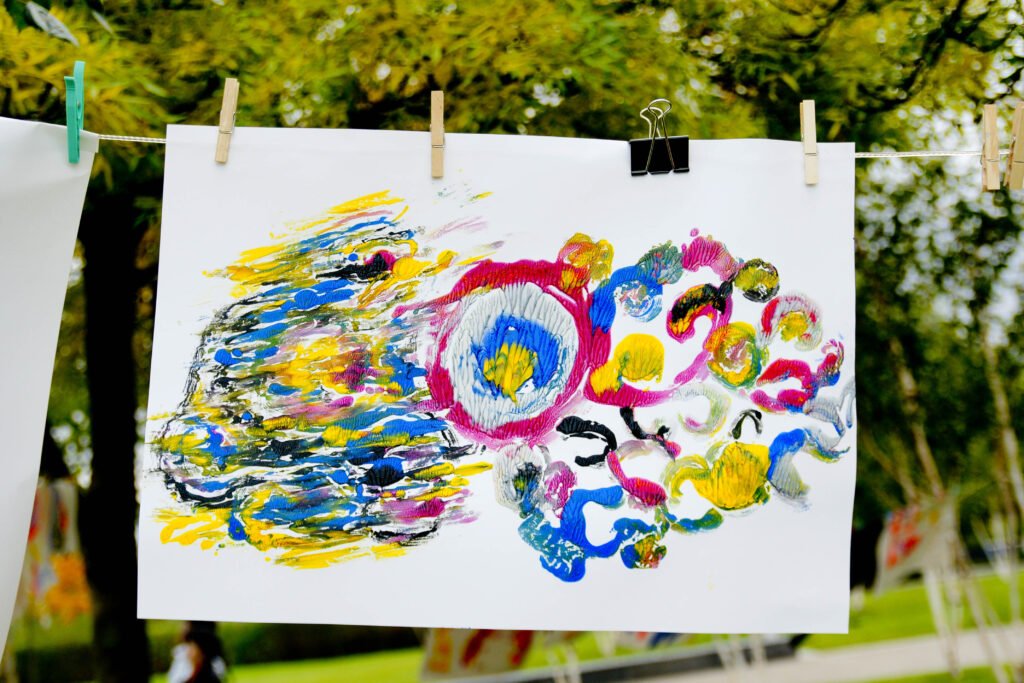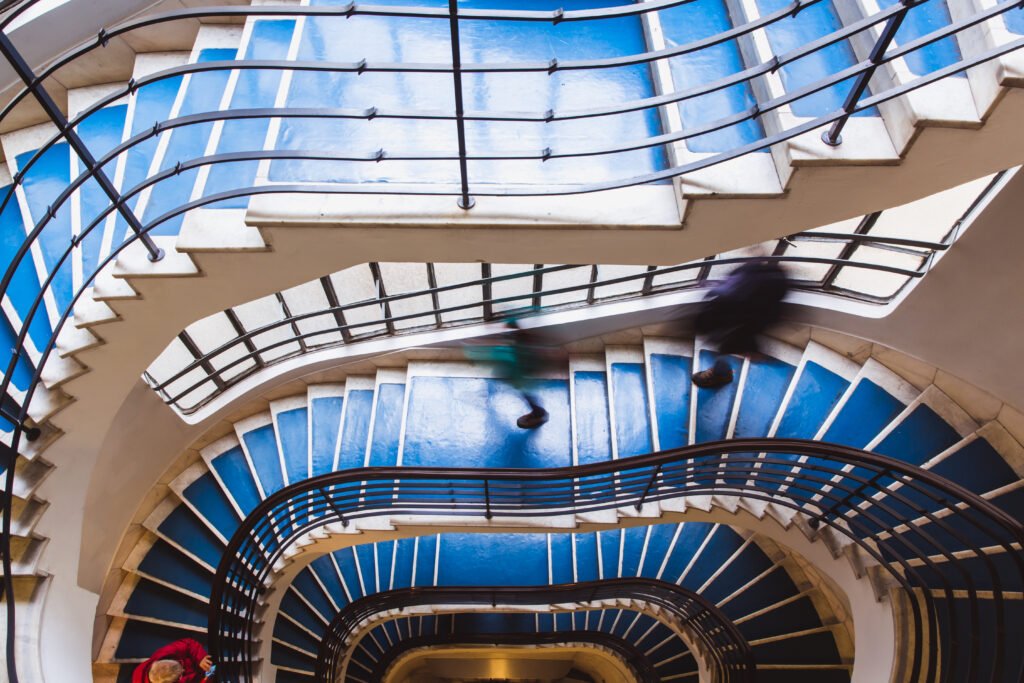Abstract art emerged in the early 20th century as a radical break from traditional figurative representation. Artists like Wassily Kandinsky and Kazimir Malevich challenged conventions by exploring color, form, and rhythm as autonomous elements of expression. Since then, abstraction has gone through many phases while remaining open to experimentation.
In the digital age, that openness has allowed abstract art to evolve in new directions. Today, it lives on screens, networks, and decentralized platforms.
The rise of NFTs and generative art has brought both challenges and opportunities, while also expanding the reach and influence of abstract art. More than ever, buying abstract art involves engaging with technology and innovation.
Abstract art and algorithms: a new creative frontier
With the advancement of algorithms and artificial intelligence, abstract art has gained unprecedented creative tools. Generative art, for instance, uses code and autonomous systems to produce unique visuals based on parameters defined by the artist. Instead of brushes or paint, programming languages like Processing, p5.js, or Python take center stage.
This new production model doesn’t eliminate creativity but shifts its location. The artist becomes a programmer of aesthetics, and code functions as a digital brush. The results can range from minimalist compositions to complex works with motion, texture, and interactive layers. A notable example is Fidenza by artist Tyler Hobbs, which uses algorithms to generate organic, unpredictable abstract pieces.
According to a study by the University of the Arts London (Digital Aesthetics and Machine Creativity, 2020), digital abstract art challenges authorship and expands creative boundaries by enabling collaboration between humans and machines. Moreover, abstract aesthetics adapt naturally to digital platforms, as they rely on pure visual composition rather than realistic representation.
This adaptability explains why abstract art stands out in digital marketplaces. Non-figurative works integrate seamlessly into virtual galleries, metaverses, and NFT platforms, becoming visual icons that work both as aesthetic objects and collectible assets.
NFTs and decentralization: the new abstract ecosystem
NFT technology has revolutionized how digital art is marketed, authenticated, and valued. It allows unique digital artworks to be verified and sold directly to the public, removing traditional intermediaries. This shift has transformed both the market and the concept of ownership and distribution.
For abstract art, this transformation is particularly significant. Works that once belonged only to museums or private collections now circulate through digital wallets, augmented reality exhibitions, and virtual galleries worldwide. Platforms like Art Blocks, SuperRare, and Foundation have broadened access to abstract art for digital and physical decoration.

Another key change lies in the aesthetic experience itself. Unlike traditional art that requires physical presence, digital abstract art can be experienced immersively through interactive environments or mobile devices.
This mobility allows artworks to become part of everyday life in new ways — as animated wallpapers, projections, or sensory installations.
Additionally, NFTs are more than certificates. They can contain process metadata, display instructions, and even automatic royalties. This ensures sustainability and proper recognition for digital artists, which the traditional market often overlooked. Selling abstract art no longer depends solely on galleries. It can happen anytime, anywhere, by anyone connected to the network.
Abstract art has always been about freedom, disruption, and new ways of seeing. In the digital era, these traits become even more relevant. Code replaces brushes, pixels take the place of paint, and galleries now exist on servers. Yet the essence remains: to provoke, to move, and to transform.



